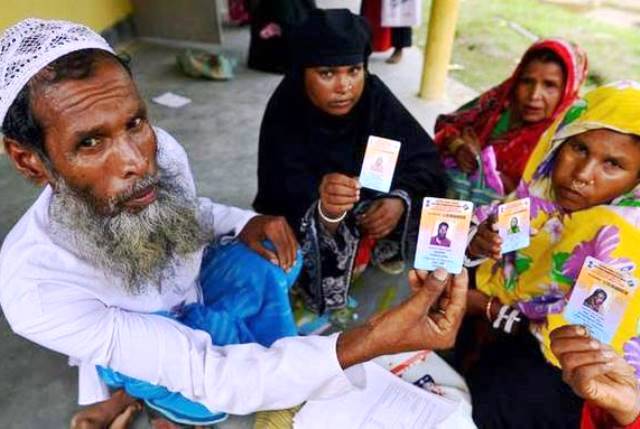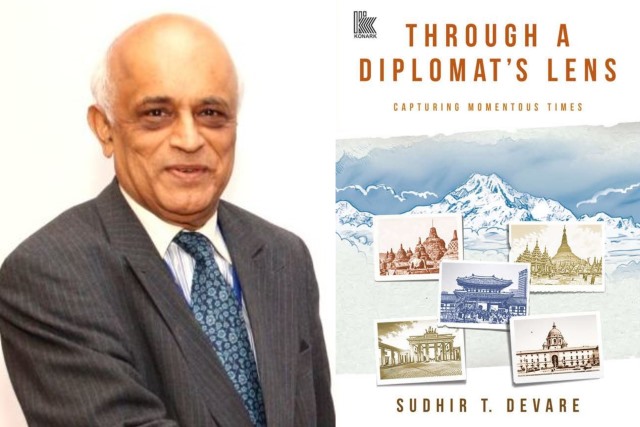
Illegal Migration & Bare Life For Muslims In Assam Camps
A few months following the release of the initial list of the National Register of Citizens (NRC), the Assamese Census Commissioner and Registrar General of India jointly released a final list which designated over 19 lakh residents of Assam as undocumented migrants. Concerned citizens, activists, and academics have written on various platforms about the plight of the “stateless people”, highlighting a humanitarian crisis in Assam. The current political climate also makes it clear that Muslims, who make up the bulk of those who will be left out in the register, would suffer a worse fate than Hindus.
Detention, the threat of deportation, and human rights violations are looming large over the life of a large chunk population in Assam. It has to be noted that detention centers were set up even before the NRC publication as many doubtful voters (D-voters) who failed to prove citizenship before the Foreigners Tribunal had been sent to these centers. Individual stories were coming up even then from those who came under the scanner of D-voters, their humiliating experience, their struggle to handle the legal process and paperwork, and the errors and arbitrariness of the whole process that made their lives hell. Now, the publication of a final list is about a massive crisis of human rights violations in the entire state. Suicide cases among the excluded have surfaced, only to confirm that NRC is a matter of life and death for many.
Let us examine the history of perpetual violence against the migrant population, especially Muslims in Assam.
Violent Ethnic Politics and the Illegality of Migration
We must prioritize addressing “migrant illegality” above the reality of illegal movement to comprehend the horrifying experiences of today’s migrant population. (De Genova 2002). It is the “illegality” of the migrant population constructed through various discursive forms that led to an overpowering denunciation of the Bengali-speaking population, especially of Muslims, in the past five decades in Assam.
This statistically substantial group has been identified since the 1970s as not really belonging to the country, notwithstanding uncertainties surrounding the reality of migration. Assam has a long history of migration dating back to the colonial era, but “migrant illegality” really became apparent in the state after Bangladesh’s independence in 1971 and the Assam Movement, which was the anti-immigration movement that followed. The most devastating outcome of the Assam Movement was the Nellie massacre of 1983, which took place in the Nagaon district of Assam during the peak of the agitation. The horrific tragedy took place right before the Assam state assembly election, which a large portion of the populace boycotted because of the unsolved migration crisis from Bangladesh. There was protracted violence as the ethnic groups were split upon participation in the election. Plain tribes such as the Bodos, the Kochs, and the Bengali-speaking Muslims participated in the election.
In contrast, the majority of the Hindu Assamese tribes, such as Tiwa, abstained from voting, and many villages in Assam witnessed fierce attacks between the polarised groups, resulting in killing and large-scale atrocities. In the Nellie massacre, the Tiwa tribes in the area, aided by Assamese Hindus, attacked and killed almost 2,000 Muslim peasants in one day. While it is often acknowledged that RSS and the indigenous people in Assam harbored long-standing animosity towards one other, several academics have shown how Sangh and other Hindu religious organizations played a significant role in it (Guhain 1985; Dasgupta and Guha 1985).
The most shocking aspect of the massacre is the impunity given to the culprits, as not even a single person was punished for this act. It is necessary to see the Nellie massacre as the pinnacle of sovereignty, a dominating group of people using their power to kill their opponents without hesitation. If the state does not have any monopoly over violence in the contemporary world; ethnic violence can become legitimate, especially when their enemies are “unwanted” populations produced by the sovereign power (van Holdt 2013).
Since the 1990s, there has been a shift in terms of the perpetrators of violence in Assam. The broader context of this shift is the violent turn of the long-term assertion of marginalized Bodo tribes for a separate state. Although the state and Assamese Hindus were initially the targets of Bodo militants, the violence eventually shifted towards the Muslim community residing in the Bodoland Territorial Area District (BTAD) regions of Assam, and it still occurs today. While Bodos also suffered in several communities in the BTAD zone, Muslims were the target of widespread militant attacks and expulsion during the most recent violent incidents in 2012 and 2014. The Khagrabari massacre of 2014, where 38 Muslims were killed at the hands of militants on a single day, stands as the most heinous incident of all.
These violent events are erroneously seen as communal conflict by the media and politicians simply because Muslims were on the enemy side, even though they were victims of brutality in the form of death, grave injuries, loss of property, and displacement.
ALSO READ: ‘Assam Detention Centres Remind Me Of Holocaust Days’
Detention Camps
While lakhs of human beings are going through detention camps in Assam today, little has been stated about Muslim camps already present in Assam since the 1980s. While the dying camp is the authentic mannequin for the excluded population, one can locate mainly remedy camps in locations like India, the place where the kingdom is anticipated to guard the displaced and violence affected. Our settings give rise to a complex and wide range of camps: riots, forced migration, and displacement resulted in the establishment of treatment camps, prison camps, refugee camps, and rehabilitation camps (Datta 2016). However, what do the alleviation camps that had been set up in Assam in a number of episodes of violence over the previous few a long time inform us?
The camps prevailing in Assam for many years characterize the epitome of the Muslim journey of violence and marginalization. After the Nellie Massacre of 1983, more than 65,000 Muslims became homeless and took refuge (Makiko 2013). There have been fifty-three camps set up after violence throughout the state, and many refused to go again to their unique locations (ibid). The violence after the Nineties in the present-day BTAD place has led to the placing up of many camps in the region. The sequence of violence commenced on October 7, 1993. They persevered until October 11, 1993, in a variety of components of the Bodo-dominated districts such as Kokrajhar, Bongaigaon, and Chirang, which witnessed huge killings, injuries, destruction of houses, and large-scale fleeing of humans from their unique habitat even to very faraway places.
It is horrifying that a camp set up for transient comfort via the kingdom continues to exist even today. Apart from this, historical Muslim camps in Bordup, Garogaon, Salabila, and Bangalduba proceed to refuge landless Muslims. Camp dwellers are struggling with poverty and diseases. Most of the camps are handled with negligence, and the inhabitants are in no way rehabilitated. Instead, they are compelled to be in the camp to live a depressing life.
There are new camps set up in locations where violence befell in the recent past. On 1 and 2 May 2014, Bodo militants carried out the worst structure of carnage in Kokrajhar, Baksa, Chirang, and different components of the BTAD areas in Assam. On 2 May 2014, the militants, alongside the energetic participation of woodland guards of the Bodo Territorial Council, carried out a meticulously deliberate assault in which 38 humans were killed, and the complete village of Khagrabari used to be set ablaze. The occurrence of distinctive camps of Muslims unfolding throughout a range of components of Assam over decades, particularly those in the Bodoland region, shows that Muslims have been decreased to the “bare life.”
The nation makes such camps in a focused area for protection and safety. But, camps are hotspots for structural violence, destitution, illness, unemployment, illiteracy, exclusion from state regulations which puts camp residents in danger of being “exposed to death.” In other words, the “biopolitics of camps” and confinement of a populace into an area in the identity of governing the violence affected normalize all types of violence.
To conclude, now that the nation has statistically hooked up a massive chunk of the populace as unworthy of the country, the political value of a populace is definitely erased. Symbolic violence of the state-driven enumeration, the chance of detention, and “deportability” infuse fear, agony, and uncertainty among the migrants. The words of Hannah Arendt become extremely relevant in this context: “The tragedy of the oppressed is not that they are denied the opportunity to live, liberty, and the pursuit of happiness, or equality before laws and the freedom of speech that were intended to address issues within specific communities—rather, it is that they are no longer a part of any community at all.
For more details visit us: https://lokmarg.com/



